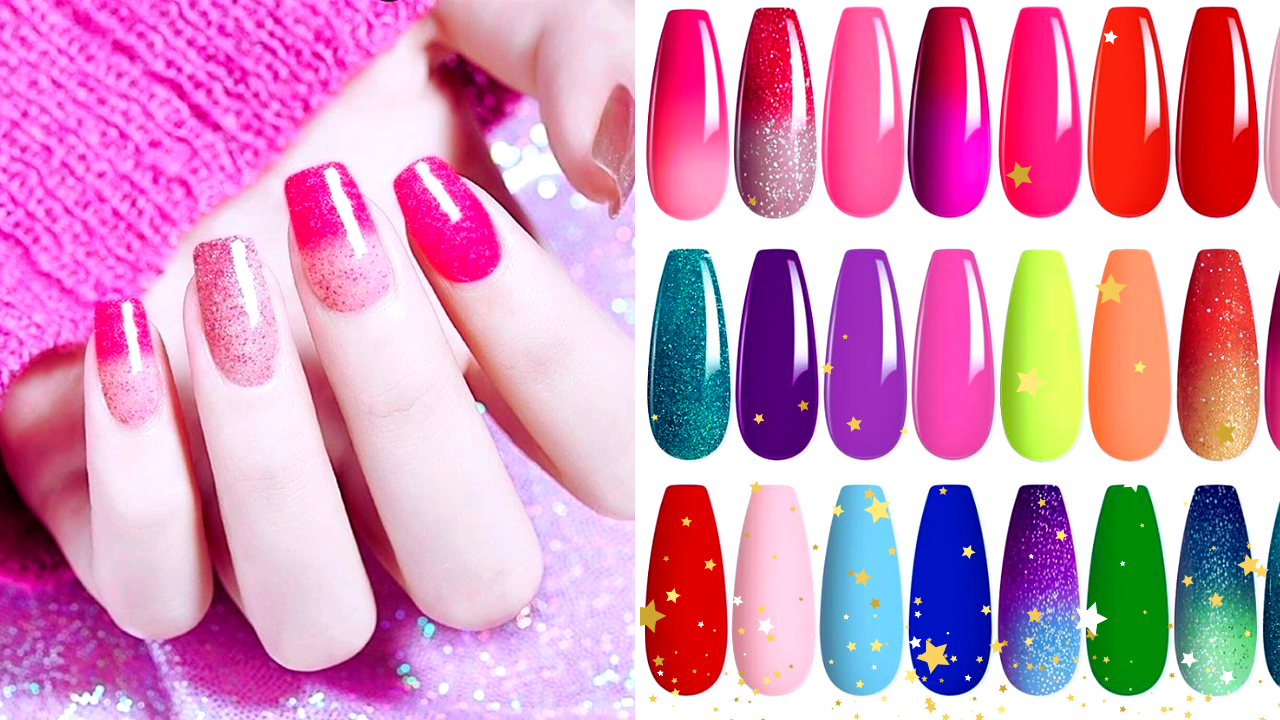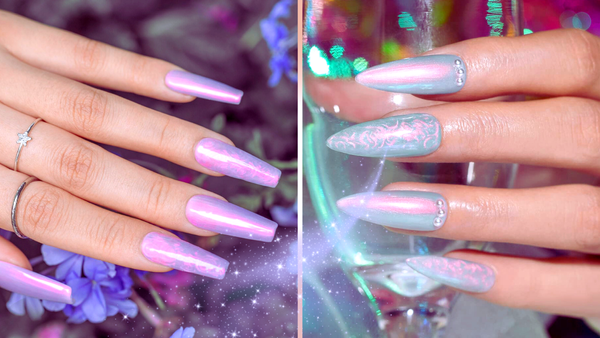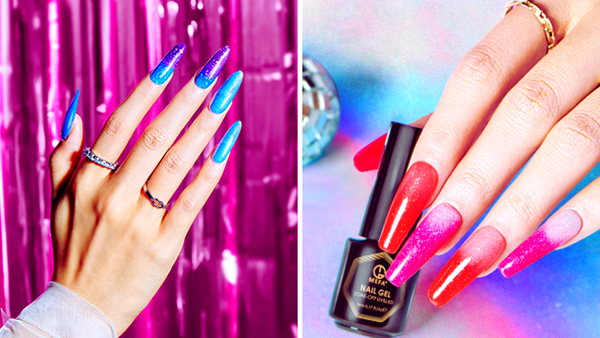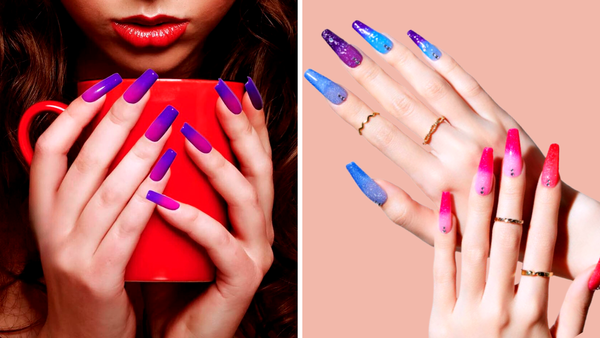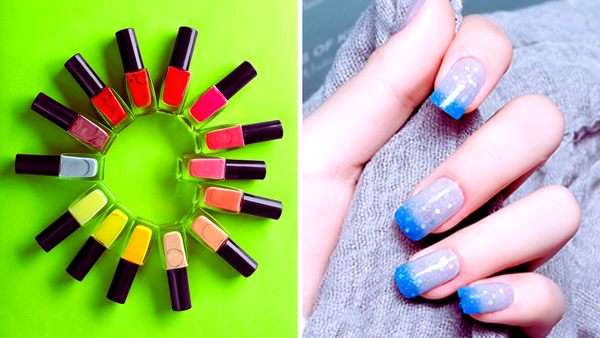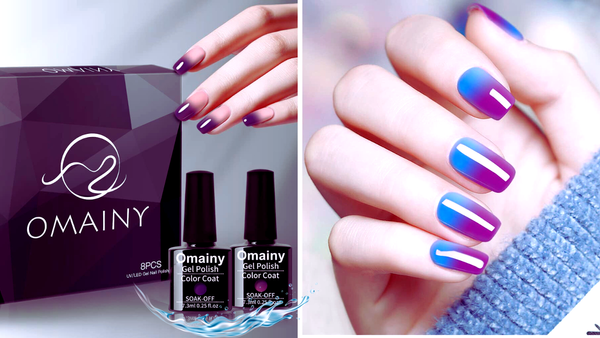Color-changing nail polish has captivated the attention of beauty enthusiasts and science buffs alike. This innovative product shifts colors based on temperature, providing a dynamic look that changes throughout the day. But what is the science behind this fascinating phenomenon, and how can you best use these polishes to enhance your nail art? Let's dive into the details.
Key Takeaways:
- Science Behind the Magic: Understand the role of leuco dyes and how they react to temperature changes.
- Types of Color-Changing Polishes: Explore the differences between thermal polishes, UV-sensitive polishes, and mood polishes.
- Practical Tips for Application: Learn how to apply and maintain color-changing nail polish for optimal performance.
The Science of Color-Changing Nail Polish
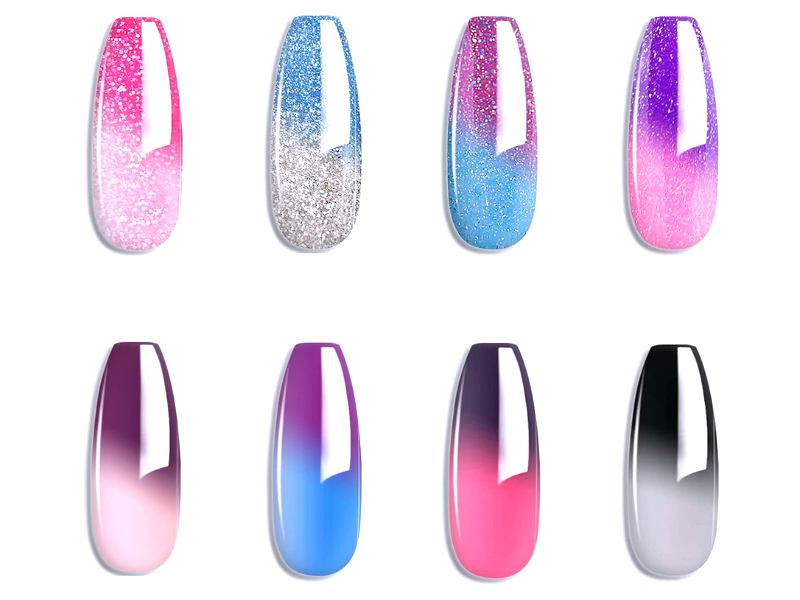
Color-changing nail polish, often called thermal nail polish, utilizes a fascinating chemical reaction to shift colors. The magic ingredient here is leuco dyes. These are temperature-sensitive pigments that change color in response to temperature changes, like how a mood ring reacts to the wearer's temperature. When incorporated into nail polish, these dyes react to the warmth of your nail beds or the surrounding environment, allowing the polish to transition between colors.
Leuco dyes are not just used in nail polish but are also the technology behind mood rings and certain types of thermochromic inks. When the temperature rises, the molecular structure of the leuco dyes changes, which alters how they absorb and reflect light, thus changing their color. This reaction is reversible, so as your nail temperature fluctuates, so does the color of your polish.
Different Types of Color-Changing Polishes
There are primarily two types of color-changing nail polishes: thermal polishes and UV-sensitive polishes. Thermal nail polishes react to changes in temperature, such as when holding a hot or cold beverage, showcasing various shades from the thermal polish as the temperature varies. On the other hand, UV-sensitive polishes change color when exposed to sunlight or UV rays, making them perfect for outdoor wear.
Each type of polish offers a unique experience. Thermal polishes are great for everyday amusement and can serve as a quirky indicator of your body’s temperature changes, especially noticeable when enjoying a hot or cold beverage. UV polishes, meanwhile, are ideal for those who enjoy outdoor activities, as they provide an interactive element to your nail appearance based on your exposure to sunlight.
Exploring the Chemistry Behind Thermal Nail Polishes
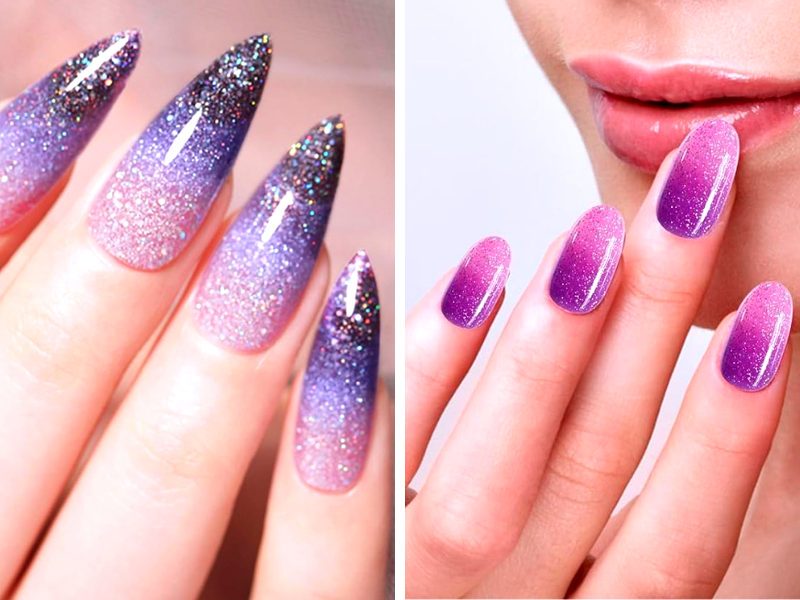
Thermal nail polishes, often called mood polish, owe their fascinating color-changing properties to a type of chemical known as leuco dyes. These dyes are sensitive to temperature changes, so a thermal polish might shift from one color to another when exposed to different temperatures. For instance, when you're holding a hot beverage or your body temperature rises, the molecular structure of the leuco dye changes, altering the way light is absorbed and, thus, the color of the polish.
The interaction between the leuco dyes and various temperatures is not just about the visible change; it's a complex chemical process. When the temperature increases, the weak acid in the polish mixes with the dye, causing it to become colorless and reveal the underlying color or turn transparent. Conversely, when the temperature drops, the reaction reverses, and the original color returns. This reversible reaction makes thermal nail polishes a dynamic choice for those looking to add a playful yet scientific touch to their nail art.
Innovative Applications of Color-Changing Polishes in Daily Life
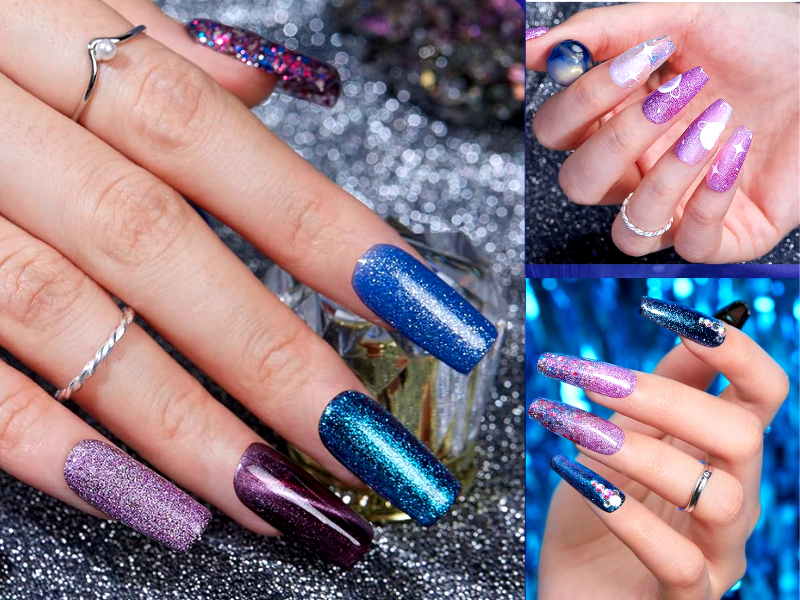
Color-changing nail polishes are not just a fun cosmetic novelty; they can also serve practical applications in daily life. For example, individuals with certain health conditions that affect body temperature, like Raynaud's disease, might use thermal polishes to monitor fluctuations in their body heat. Changes in nail color can provide a visual cue about their condition, prompting them to seek a warmer environment or medical assistance if necessary.
Beyond health monitoring, thermal nail polishes can also enhance fashion and design. Imagine a wardrobe where your nail color complements or contrasts with your outfit without the need for multiple polish changes. For party-goers or those involved in fashion shows, these polishes can add an unexpected twist to their look, changing hues under the spotlight or transitioning from the warm lights of an indoor event to the cool evening outside. This not only showcases a unique style but also sparks conversations, making it a perfect icebreaker at social events.
Application Tips for Optimal Results
Applying color-changing nail polish is similar to applying regular polish, but there are a few tips to ensure you get the full effect. First, ensure your nails are clean and free of old polish. Apply a base coat to protect your nails and enhance adherence to the color-changing polish. When applying the color-changing polish, aim for two to three thin coats to achieve full opacity. Each layer should be allowed to dry completely before applying the next to prevent smudging and to ensure the thermal properties are not compromised. Unlike regular nail polish, which might last a week or more with a proper application, color-changing polish requires more attention to maintain its unique effect over time.
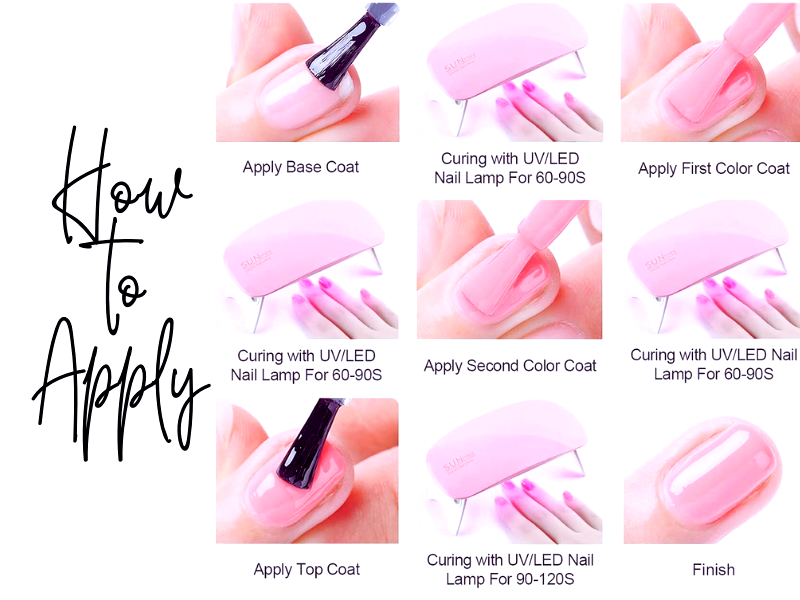
Finally, a top coat is crucial not only to protect the color and design but also to ensure the polish's longevity. Color-changing polishes can be more susceptible to chipping and wear due to their special formulation, so a good top coat can extend the life of your manicure, similar to how it would with a regular mani or acrylic set.
Maintaining Your Color Changing Manicure
To maintain the vibrant and responsive color-changing properties of your polish, it’s important to keep your nails healthy and the polish intact. Avoid prolonged exposure to harsh chemicals, which can strip the polish's color-changing properties. Regular touch-ups with a top coat can help seal in the color and protect it from external damage.
It's also worth noting that the shelf life of color-changing nail polish can be shorter than regular polishes. The chemicals that allow color change can degrade over time, especially if the polish is frequently exposed to temperature extremes outside of normal wear. Store your polishes in a cool, dark place to help preserve their reactive qualities.
Fun Designs with Color-Changing Polish
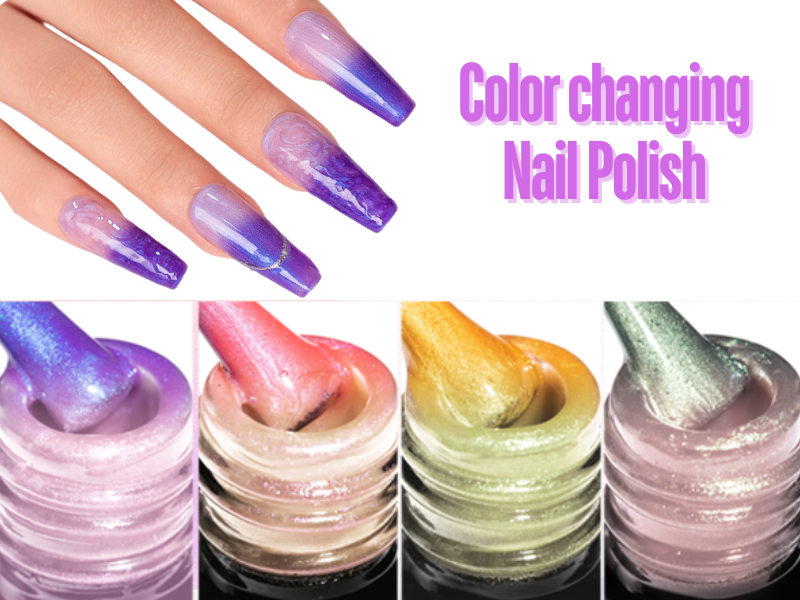
Color-changing nail polish opens up a world of creative possibilities for nail art. You can use these polishes to create designs that evolve throughout the day. For example, apply a thermal polish as a base and use a regular polish for designs on top. The base color will shift with temperature changes, while the design stays constant, creating a dynamic look that changes with your environment.
Visiting a nail salon can elevate the experience of color-changing nail polish, offering professional expertise in achieving intricate designs and decorative combinations, such as colored tips, ombré patterns, and duo-chrome colors, that might be challenging to replicate at home.
Another fun idea is to layer different color-changing polishes to create custom shades and effects. The interaction between different thermal properties can result in unique multi-colored effects, adding depth and intrigue to your nail art.
Summary
Color-changing nail polish is not only a fun and interactive addition to your beauty routine but also a fascinating application of chemical science. Whether you prefer the subtle shifts of thermal polishes or the dramatic changes of UV-sensitive varieties, these polishes can add a playful element to your style. Remember to apply carefully, maintain properly, and get creative with your designs to make the most of these dynamic polishes.
FAQ
How long does color-changing nail polish last on nails?
With proper application and maintenance, color-changing nail polish can last as long as regular polish, typically one to two weeks.
Can color-changing polish be used with artificial nails?
Yes, color-changing polishes can be applied to artificial nails just as with natural nails. The effect should be the same if the artificial nails are exposed to different temperatures or UV light.
Are there any safety concerns with color-changing nail polishes?
Color-changing nail polishes are generally safe for use. However, if you have sensitive skin or allergies, it's always a good idea to check the ingredients list for potential irritants, just as you would with any cosmetic product.
